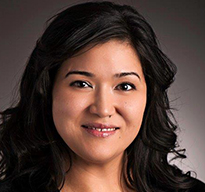Agenda| All times Mountain Daylight Time (UTC -6)
Monday, September 28
This course is an introduction to Butler assumptions and mathematical principles and its limitations and also briefly discusses other studies which address steam assisted gravity drainage (SAGD) oil production and SOR evaluation. In this course there will be examples using Excel spreadsheets.
Topics:
- SAGD Operation: The course starts with short definition of SAGD process and how different stage of it will be operated.
- SAGD Heat Transfer: Heat-transfer mechanisms are pivotal to the SAGD process. In this section different temperature models and their consideration with respect to conduction and convection are discussed:
- Butler Temperature Model
- Sharma Gates Convection Model
- Irani and Ghannadi Convection Model
- Butler Production Model: The derivation of oil production using Butler is discussed. Finally assumptions in “Original Butler model”, TANDRAIN and LINDRAIN models will be discussed and evaluated:
- Butler Plateau Model (i.e., “Original Butler model”, TANDRAIN and LINDRAIN)
- Butler Ramp-up Model
- Discussion on Steam Interface Velocity in “Original Butler model”, TANDRAIN and LINDRAIN models, and its comparison to field data.
- m exponent factor discussion
- SOR Discussion: Heat conservation concept and the basis of different SOR analytical models are presented:
- Reis SOR Model
- Edmunds and Peterson (2007)
- Miura and Wang (2012) Model
Learning Objectives:
- At the end of this course, participants will be able to:
- Understanding heat transfer in SAGD operation.
- Understanding limitations of Butler and other analytical models.
- Assumptions made in SAGD analytical models.
- Optimizations made in forecasting models.
Special Requirements:
- Personal Computer
- High-Speed Internet Connection
- Search Engine (Google preferred)
0.4 CEUs will be awarded for this course.
Tubular structures in thermal applications are subject to unique design challenges that cannot be addressed with conventional methods. In conventional design, the structure “fails” when thermally induced loads yield the pipe, but thermal wells often must operate under such conditions and industry experience demonstrates that wells can do so reliably. Designing a structure that remains stable requires knowledge of strain-based design: the distinction between strength and stiffness, the effects of variability in strength and stiffness, load path dependencies, post-yield material behavior, and strain localization. Collateral considerations for resistance to environmental effects, geomechanical loads and production management can also challenge intuition developed in conventional well design. In this course, participants will learn to “think strain, not stress” for well structure design and gain exposure to other aspects of thermal well design.
Learning Objectives:
This course provides an introduction to subsurface well design for thermally stimulated wells, including discussion of why design approaches for thermal wells must differ from conventional approaches. The concept of strain-based design will be explored, focusing first on the design needs for a successful thermal well design and second on raising awareness of other situations where casing loads can exceed yield (e.g. wells passing through unstable geology or producing from compacting reservoirs).
Topics:
- Mechanical properties for thermal OCTG
- Casing and Liner design considerations
- Connections for thermal stimulation
- Considerations for environmental exposure
- Production management topics pertinent to liner design
0.4 CEUs will be awarded for this course.
Special Requirements:
- Personal Computer
- High-Speed Internet Connection
- Search Engine (Google preferred)
- Learn more about this course.
Machine learning has been successfully used in various engineering disciplines. Nowadays, large amount of data related to reservoir properties, drilling, completion, and production is routinely collected in the upstream oil and gas operation, which can be further analyzed to optimize the field operations and improve the reservoir performance. This course starts with the basic Machine Learning concepts, application workflows and the supervised and unsupervised learning algorithms. The commonly used algorithms in both categories such as Clustering, Artificial Neural Networks, Decision Trees, Support Vector Machine will be presented, allowing participants to reach a clear understanding on their strengths. Specific examples will be discussed to demonstrate the application of each algorithm in the development of unconventional tight/shale reservoirs. The course is devoted to field applications of this technology with a focus on reservoir characterization, production analysis and prediction, and recovery enhancement.
Topics:
- Introduction of Machine Learning concepts
- A typical workflow to design and develop a Machine Learning project
- Feature selection
- Supervised learning algorithms
- Unsupervised learning algorithms
- Machine learning applications in the reservoir characterization in tight/shale formations
- Machine learning applications in productivity prediction and recovery enhancement in tight/shale reservoirs
Upon completion of this course, participants are expected to have a good understanding of the characteristics of the machine learning approaches and be able to use them to identify potential application domains in the upstream oil and gas industry. They will acquire detailed knowledge of the popularly used machine learning algorithms and the workflow to employ these algorithms to solve petroleum engineering problems. Finally, they will see the demonstrations of different machine learning algorithms to reservoir characterization, production analysis, well productivity forcast, and recovery enhancement in tight/shale reservoirs.
0.4 CEUs will be awarded for this course.
Special Requirements:
- Personal Computer
- High-Speed Internet Connection
- Search Engine (Google preferred)
Shales and other low-permeability formations require multistage completions, hydraulic fracturing, and horizontal wells to produce at economic rates. This course focuses on the multistage completion systems that are used in these applications, including plug-and-perf, ball-activated systems (frac sleeves), and coiled tubing-activated systems (annular fracturing). Participants will learn the different types of multistage completion options and how they compare in different applications. They will also get an overview of low-permeability plays and learn the basics of hydraulic fracturing and refracturing.
Topics:
- An overview of applications that require multistage hydraulic fracturing
- The basics of hydraulic fracturing and refracturing theory and design
- Evolution of multistage completions
- Wellbore completion options for multistage hydraulic fracturing
- Plug-and-perf completions
- Ball-activated completion systems (frac sleeves)
- Coiled-tubing-activated completions systems (annular fracturing)
- New multistage completion technologies
- Benefits and considerations for each completion system
- Application specific solutions for wellbore completion design
- Refracturing options for existing wells
0.4 CEUs will be awarded for this course.
Special Requirements:
- Personal Computer
- High-Speed Internet Connection
- Search Engine (Google preferred)
This course covers the essential concepts and techniques applied in evaluating hydrocarbon storage and productivity potential in shale and tight reservoirs, with an emphasis on practical methods uncommon to conventional reservoir analysis. The limitations and advantages of the different techniques will be illustrated through examples compiled from actual evaluation studies in several different basins. The pace and content of the course is intended for those looking to gain a solid understanding of unconventional reservoir concepts who are already very familiar with reservoir evaluation techniques for conventional oil & gas reservoirs.
Topics:
- Unconventional reservoir factors having the largest impact on well productivity and hydrocarbon storage
- Quality control analysis and applications for unconventional core test data
- Well spacing concepts and optimization
- Geochemical and electric log considerations
- Factors generating sweet spots
- Geologic factors impacting the success of frac treatments
0.4 CEUs will be awarded for this course.
Special Requirements:
- Personal Computer
- High-Speed Internet Connection
- Search Engine (Google preferred)
Tuesday, September 29
Moderator(s):

Dinara Millington
VP Research
Canadian Energy Research Institute (CERI)
Speaker(s):

Carrie Fanai
Enterprise Technology
Suncor Energy Services Inc.

John Gorman
Area Vice-President
Canada, West Coast USA
Halliburton

Scott McNally
Green Energy Advisor
Crescent Point Energy

Roman Tanner
Vice President
Co-Head A&D
Goldman Sachs & Co.
Christopher Yang
Senior Director
Legal and Business Affairs
Algonquin Power
Polarized public perception has made initiating hydrocarbon development projects in Western Canada increasingly complex. The upstream industry must take a holistic view and improve investment performance in economic, safety, environmental, social, and governance considerations. Please join us for a discussion with diverse perspectives about how development of viscous and tight resources can adopt new ways of working to fit into the energy mix of the future. We will hear from a range of perspectives, including those from business leaders and innovators from outside and within the energy industry, from environmental commentators, from government, and from the financial sector.
5.6 trillion barrels of heavy-oil and extra-heavy oil resources are estimated worldwide in more than 100 countries: this is a massive resource which faces major challenges. In this session heavy oil experts from different countries will talk about their innovations, technologies, workflows and challenges to cater to the current and future demand for energy and oil-based products. The purpose of this panel is to illustrate how cost management and cutting-edge technological processes and innovations are enabling heavy oil and extra heavy oil to remain a viable energy in fueling the future while stewarding to achieve regional and global societal and environmental objectives. This constitutes a great opportunity for getting professionals together to share their vision and experiences regarding heavy oil developments around the world, providing insight into production optimisation and financial viability.
| Time | Paper # | Presentation |
|---|---|---|
| 1100-1130 |
199911
|
Scale Up of Multi-Phase Flow Properties from Micro to Core Scale |
| 1130-1200 |
199941
|
Interpretation of Electromagnetic Wave Penetration and Absorption for Different Reservoir Mineralogy (Quartz-Rich, Limestone-Rich, and Clay-rich) and at High and Low Water Saturation Values for A Bitumen Reservoir |
| 1200-1230 |
199961
|
Measurement of Concentration-Dependent Diffusion Coefficient of Gaseous Solvents in Bitumen |
| Alternate |
199940
|
SAGD Efficiency Improvement Using Chemicals: A Visual Analysis for Proper Chemical Formulation and Optimal Injection Strategies |
| Alternate |
199959
|
Impact of Carbonates on Reaction Kinetics of a Bitumen Combustion |
| Time | Paper # | Presentation |
|---|---|---|
| 1330-1400 |
199921
|
Thermal Stability of Acrylamide-Based Polymers at High Temperature and High Salinity |
| 1400-1430 |
199909
|
Effects of Oil Viscosity and Injection Velocity on Imbibition Displacement in Sandstones |
| 1430-1500 |
199910
|
Feasibility of Electromagnetic Heating for Oil Sand Reservoirs |
| Alternate |
199966
|
Underlying Physics of Heavy Oil Recovery by Gas Injection: An Experimental Parametric Analysis When Oil Exists in the Form of Oil Based Emulsion |
Panelist(s):
Lindsay Campbell, Alberta Energy Regulator; Brian Van Vliet, Spartan Controls; Wayne Hillier, Modern West Advisory
This panel will provide a high-level review of the current regulatory landscape in Canada as well as what is evolving globally. Discussion will be on how Canadian oil and gas producers and technology providers are managing their methane emissions in light of evolving regulations and financing requirements. They will discuss the best available technology types on the market today plus any ongoing research in cost-effective emissions leak detection technologies. From clean well-site design to large-scale technology testing, the panel will discuss how and why they are taking action on reducing their methane emissions.
| Time | Paper # | Presentation |
|---|---|---|
| 1515-1545 |
199922
|
Simulation of Non-Condensable Gases Co-Injection in Steam Assisted Gravity Drainage: The Role of Gas-liquid Relative Permeability Curves |
| 1545-1615 |
199929
|
Productivity Index for SAGD Producers During Steam-Flashing: Coning Model I and Ii |
| 1615-1645 |
200023
|
Retrospective Validation of The Robustness of Reservoir Simulation Predictions |
Chat Discussions and Face-to-Face Themed Rooms
Wednesday, September 30
Canada is a global leader in the field of CCUS, being home to three of the world’s leading CCSU projects: Shell’s fully integrated Quest project, Aquistore's project at the Boundary Dam, and the Alberta Carbon Trunk Line. However, the petroleum industry is under significant pressure to improve its environmental performance while investing in new technology development and maintaining economic competitiveness. This special session will include topics regarding the CCUS progress to date, present challenges, and requirements for a sustainable future.
Presentations:
- Negative Emissions + Positive Energy: How Canada’s Oil & Gas Industry Can Reverse Climate Change
- Steven Bryant, University of Calgary
- The Quest CCS Operation - The Road to 5 Million Tonnes
- Sarah Kassam, Shell Canada
- The Alberta Carbon Trunk Line As An Enabler To EOR
-
Jeff Pearson, Wolf Midstream
-
| Time | Paper # | Presentation |
|---|---|---|
| 0900-0930 |
199944
|
A New Criterion for the Estimate of Impact of Lean Zones on the Performance of SAGD/SA-SAGD/EBRT Processes |
| 0930-1000 |
199939
|
Experimental Study of the Effect of Solvent Addition and Temperature on Two-Phase Bitumen/Water Relative Permeability |
| 1000-1030 |
199917
|
Efficient Tracking of Solvent Chamber Development During Warm Solvent Injection in Heterogeneous Reservoirs via Machine Learning |
| 1100-1130 |
199950
|
Determination of Asphaltene Precipitation Amount under the Condition of the Solvent Assisted SAGD Process by the Application of PVT Apparatus |
| 1130-1200 |
199915
|
Surfactant Flooding Performance for a Canadian Bitumen Recovery: Effect of Polarity |
| 1200-1230 |
199954
|
Analytical and Numerical Modeling of In-Situ Reflux (ISR) for Optimizing Oil Sands Development |
| Alternate |
199916
|
A Pore-Scale Investigation of Solvent-Assisted Thermal Processes for Heavy Oil and Bitumen Recovery - Mass Transfer and Condensation Mixing |
| Alternate |
199928
|
Phase Behaviour of Solvent(s)/Heavy Oil Systems at High Pressures and Elevated Temperatures |
| Alternate |
199958
|
The Effect of Solvent Based Nanofluid Flooding on Heavy Oil Recovery |
| Time | Paper # | Presentation |
|---|---|---|
| 1330-1400 |
199937
|
Advances in Understanding the Scaling Potential for Thermal Wells: A Mechanistic Study |
| 1400-1430 |
199938
|
Fiber Optics Application for Downhole Monitoring and Wellbore Surveillance; SAGD Monitoring, Flow Regime Determination and Flow Loop Design |
| 1430-1500 |
199913
|
Experimental Evaluation of A Hydraulically Actuated Double-Acting Positive Displacement Quad-Pump System for SAGD Oil Production Applications |
| Alternate |
199914
|
Progress of the Artificial Lift Technology Suitable for Offshore Thermal Recovery in Bohai Bay, China |
Key development considerations in low viscosity or low permeability plays include: horizontal wells, fracturing or steam, multi-well pads, statistical distributions, pervasive issues with water, and a ruthless focus on costs. You will hear from leading operators in unconventional tight oil and heavy oil on how they have tackled subsurface delivery & infrastructure challenges and where they continue to face obstacles to profitable resource development.
This invited presenter session will highlight the design, implementation, and well performance of new technologies in Thermal Well Integrity and Design through case studies.
Presentations:
- Framework for Defining Thermal Cycle Severity and Assessing Impacts on Thermal Well Intermediate Casing System Integrity
- Dan Dall'Acqua, Noetic Engineering 2008 Inc.
- SAGD Circulation Strategy Utilizing Flow Control Devices
- Jeremie Batias, Total
- Evaluating Temperature Rate Near the Wellbore Considering Slow Warm-up Case for a SAGD Producer Well with Different Completion Configurations Using Dynamic Flow Simulations
- Carlos Nascimento, Schlumberger
Chat Discussions and Face-to-Face Themed Rooms
Thursday, October 01
The aim of this panel is to increase awareness in the oil and gas industry about nuclear energy and the potential opportunities and challenges of deploying nuclear energy within the oil and gas industry. Some key topics and questions this session will cover are:
- What is the perception of nuclear energy?
- What are the potential synergies/opportunities for application of nuclear to enhance the O&G industry and assist with reducing GHG’s?
- How much nuclear waste is generated and how is it managed?
- What technological developments have been made, such as smaller fit for purpose and modular designs, and how do these compare to the old conventional nuclear power plants everyone is afraid of?
- How is nuclear energy regulated? What safety and emergency protocols and checks are in place to ensure the highest standards of equipment, maintenance, knowledge/training, release prevention, emergency preparedness etc.
| Time | Paper # | Presentation |
|---|---|---|
| 0900-0930 |
199933
|
Introduction of Steam-Assisted Gravity-Drainage Oil Rate Prediction Using The 5-Line Model |
| 0930-1000 |
199927
|
The Myth of Residual Oil Saturation in SAGD - Simulations Against Reality |
| 1000-1030 |
199907
|
Steam Allocation Optimization in Full Field Multi-Pad SAGD Reservoir |
| 1100-1130 |
199946
|
Materials, Well Designs and Numerical Simulations for the Construction of a Low Loss Zone for Radiofrequency Downhole Heating |
| 1130-1200 |
199943
|
Theory and Implementation of an Approximate Physics Simulator for Heavy Oil Production Forecasting |
| 1200-1230 |
199930
|
Simulation of Non-Condensable Gases Co-Injection in Steam Assisted Gravity Drainage: State of the Art and Important Mechanisms |
| Time | Paper # | Presentation |
|---|---|---|
|
199940
|
SAGD Efficiency Improvement Using Chemicals: A Visual Analysis for Proper Chemical Formulation and Optimal Injection Strategies | |
|
199959
|
Impact of Carbonates on Reaction Kinetics of a Bitumen Combustion | |
|
199966
|
Underlying Physics of Heavy Oil Recovery by Gas Injection: An Experimental Parametric Analysis When Oil Exists in the Form of Oil Based Emulsion |
| Time | Paper # | Presentation |
|---|---|---|
| 1100-1130 |
199931
|
Look Ahead of the Bit While Drilling: Potential Impacts and Challenges in the McMurray Formation |
| 1130-1200 |
199960
|
Standalone Sand Control Evaluation: Developing a Large-scale High Temperature Sand Retention Test Apparatus |
| 1200-1230 |
199952
|
Through Tubing Casing Break Detection an EM Thickness Tool Application |
| Alternate |
199948
|
Development of a Rigorous Erosion Prediction Physical Model for Thermal Standalone Sand Control Screens |
| Alternate |
199935
|
Innovative Fluid-Loss Control Pill Improved Workover Operations in a Shallow Low-Pressure Heavy Oil Unconsolidated Sandstone Reservoir in Kuwait |
| Time | Paper # | Presentation |
|---|---|---|
|
199916
|
A Pore-Scale Investigation of Solvent-Assisted Thermal Processes for Heavy Oil and Bitumen Recovery - Mass Transfer and Condensation Mixing | |
|
199928
|
Phase Behaviour of Solvent(s)/Heavy Oil Systems at High Pressures and Elevated Temperatures | |
|
199958
|
The Effect of Solvent Based Nanofluid Flooding on Heavy Oil Recovery |
| Time | Paper # | Presentation |
|---|---|---|
| 1330-1400 |
199936
|
Compositional Changes in Athabasca Bitumen During Air Injection into Mature SAGD Chambers - Observations from 3-D Large Scale Experiments |
| 1400-1430 |
199925
|
Scalable Steam Additives for Enhancing In-Situ Bitumen Recovery in SAGD Process |
| 1430-1500 |
199923
|
Application of Mesh Adaptive Derivative-Free Optimization Technique for Gas-lift Optimization in an Integrated Reservoirs, Wells, and Facilities Modeling Environment |
| Alternate |
199934
|
Performance and Comprehensive Mechanisms of Non-Condensable Gas Assisted Steam Process in Enhanced Heavy Oil Recovery: An Experimental Study |
| Time | Paper # | Presentation |
|---|---|---|
| 1330-1400 |
199951
|
A Comprehensive Review Of Enhanced Oil Recovery Projects In Canada And Data Analysis For Planning Successful Future EOR Projects |
| 1400-1430 |
199908
|
Data-Driven Steam Optimization for SAGD |
| 1430-1500 |
199906
|
Techniques for Fast Screening of 3D Heterogeneous Shale Barrier Configurations and Their Impacts on SAGD Production Behavior |
Chat Discussions and Face-to-Face Themed Rooms
Friday, October 02
This session will recap some of the best presentations from the 2019 SPE Data Analytics Workshop highlighting the fast-changing data culture and presenting specific use cases in oilsands and unconventional projects.
Presentations:
- Under the Hood – Montney Integrated Analytics
- Lee Grant, Birchcliff Energy
- Statistical Methods for Production Allocation of Fluids from Petroleum Reservoirs
- Mathew Fay, Shell Canada
| Time | Paper # | Presentation |
|---|---|---|
| 0900-0930 |
199924
|
Improved Insitu Stress Characterization Through Analysis of Diagnostic Fracture Injection Tests (DFITS) Using the Changing Compliance Method and its Impact on Caprock Integrity Analysis |
| 0930-1000 |
199957
|
Impact of Natural Fractures on Caprock Integrity in Steam Assisted Gravity Drainage |
| 1000-1030 |
199955
|
Modeling the Effects of Reservoir Deformation During Steam Injection Operations: From Empirical Models to a More Rigorous Geomechanical Treatment in the Numerical Simulation of SAGD |
| Time | Paper # | Presentation |
|---|---|---|
|
199914
|
Progress of the Artificial Lift Technology Suitable for Offshore Thermal Recovery in Bohai Bay, China | |
|
199948
|
Development of a Rigorous Erosion Prediction Physical Model for Thermal Standalone Sand Control Screens | |
|
199935
|
Innovative Fluid-Loss Control Pill Improved Workover Operations in a Shallow Low-Pressure Heavy Oil Unconsolidated Sandstone Reservoir in Kuwait |
To meet the evolving values of society and stay competitive, the energy industry must continue to innovate and adapt its technology towards sustainability. Start-up companies are particularly well-positioned to create agile, entrepreneurial solutions that will help facilitate the transformation of our industry. Unfortunately, however, it is commonly known that most small businesses start and fail within only a couple of years. This panel will discuss the various hurdles that these businesses experience, and moreover, the solutions that can be provided through government funding, investment consortiums, venture capital, and collaboration with larger corporations that are eager to tap into innovation.
Part 1 - 11:00-12:30
The first 90 minutes of this session will have 4 speakers deliver presentations on how to get funding for start-up projects.
| Time | Paper # | Presentation |
|---|---|---|
| 1100-1130 |
199949
|
Flue Gas Waste Heat Utilization for Enhanced Oil Production - Water Hot-Gas Injection for Lloydminster Reservoirs |
| 1130-1200 |
199964
|
Enhanced Oil Recovery in Post-CHOPS (Cold Heavy Oil Production with Sand) Heavy Oil Reservoirs of Alberta and Saskatchewan Part 1: Field Piloting of Mild Heating Technologies |
| 1200-1230 |
199947
|
Enhanced Oil Recovery in Post-CHOPS (Cold Heavy Oil Production with Sand) Heavy Oil Reservoirs of Alberta and Saskatchewan Part 2 : Field Piloting of Cycling Solvent Injection |
| Alternate |
199942
|
A Novel Experimental Method (CCEC) and Modelling of Methane Dissolution and Exsolution in Heavy Oil |
| Alternate |
199956
|
Analysis Of The Acoustic Velocity Of Gas from Fluid Level Tests In Producing Heavy Crude Shallow Wells With Cyclic Steam And Nitrogen Stimulation, Colombia |
| Time | Paper # | Presentation |
|---|---|---|
|
199934
|
Performance and Comprehensive Mechanisms of Non-Condensable Gas Assisted Steam Process in Enhanced Heavy Oil Recovery: An Experimental Study | |
|
199942
|
A Novel Experimental Method (CCEC) and Modelling of Methane Dissolution and Exsolution in Heavy Oil | |
|
199956
|
Analysis Of The Acoustic Velocity Of Gas from Fluid Level Tests In Producing Heavy Crude Shallow Wells With Cyclic Steam And Nitrogen Stimulation, Colombia |
Panelist(s):
Stuart Kinnear, Interface Fluidics; Lorraine Becker, EnerNext Partners; Rick Tofani, Southern Alberta Institute of Technology; Julian Ortiz, ConocoPhillips; Robert Allen, EVOK Innovations; Jeanine Vany, Eavor Technologies
To meet the evolving values of society and stay competitive, the energy industry must continue to innovate and adapt its technology towards sustainability. Start-up companies are particularly well-positioned to create agile, entrepreneurial solutions that will help facilitate the transformation of our industry. Unfortunately, however, it is commonly known that most small businesses start and fail within only a couple of years. This panel will discuss the various hurdles that these businesses experience, and moreover, the solutions that can be provided through government funding, investment consortiums, venture capital, and collaboration with larger corporations that are eager to tap into innovation.
Part 2 - 13:30-15:00
The second half of the session will bring in new speakers for a panel discussion about the start-up process. Panelists will represent a cross-section of organizations with experience in the start-up process sharing their knowledge and unique perspectives.
